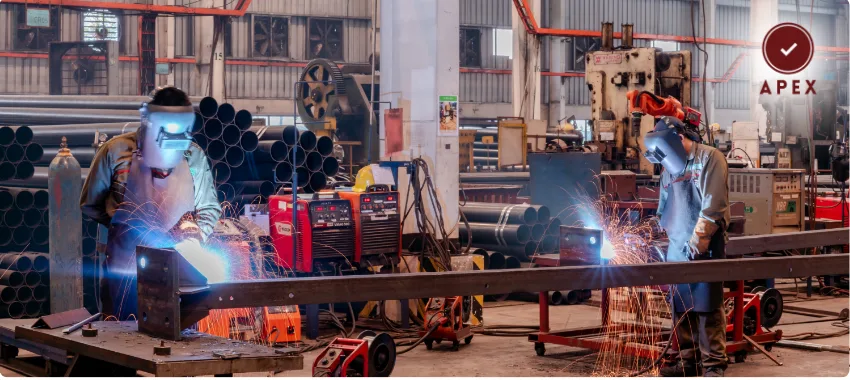Why ISO 45001 Is Replacing OHSAS 18001: What You Need to Know?
Workplace safety today is more than just compliance. It is about protecting people, improving work culture, and building a responsible brand. The shift from OHSAS 18001:2007 to ISO 45001:2018 marks a global movement towards stronger Occupational Health & Safety Management Systems (OH&S / OHSMS).
Thousands of organizations across Dubai, Abu Dhabi, Sharjah, UAE, Doha, Qatar, Muscat, Oman, Kuwait, Bahrain, and Saudi Arabia (KSA) are now transitioning to ISO 45001 to ensure a safer and more efficient working environment.

Why the Transition from OHSAS 18001 to ISO 45001 is important?
For many years, OHSAS 18001:2007 guided health and safety practices. However, workplaces evolved, new risks emerged, and global regulations strengthened. To address these new challenges, ISO introducedISO 45001:2018, a standard that focuses on prevention, risk management, and employee participation, rather than just hazard control.
“The International Accreditation Forum (IAF) has officially published migration requirements, meaning companies must shift from OHSAS 18001 to ISO 45001 to maintain valid certification.”
ISO 45001 vs OHSAS 18001: What’s Different?
| OHSAS 18001 | ISO 45001 |
|---|---|
| Procedure-based approach | Process-based and proactive |
| Focus on hazard control | Focus on risk prevention & safety culture |
| Limited top management involvement | Leadership accountability is mandatory |
| No strong employee engagement requirement | Employee participation is a key requirement |
ISO 45001 is not just an update — it is a higher standard for safety excellence.
The Real-World Need for ISO 45001: A Look at Global Statistics
According to the International Labour Organization (ILO) (2017 data):
- 2.78 million workers lose their lives every year due to workplace accidents.
- 374 million non-fatal workplace injuries occur annually.
These numbers highlight a harsh reality:
Every unsafe workplace affects families, careers, and businesses.
ISO 45001 is designed specifically to reduce accidents, prevent injuries, and promote a strong safety culture.
How ISO 45001 Integrates with Other Management Systems
ISO 45001 is built to align seamlessly with standards many organizations already use:
| Standard | Focus Area |
|---|---|
| ISO 9001 | Quality Management |
| ISO 14001 | Environmental Management |
| ISO 45001 | Occupational Health & Safety |
This makes it easier to create a Unified Integrated Management System (IMS) without duplicated processes.
Benefits of ISO 45001:2018 for Your Business
Implementing ISO 45001 supports both people and performance:
- Reduced number of workplace accidents
- Lower absenteeism and improved productivity
- Safer, healthier work environment
- Enhanced employee trust and morale
- Better compliance with legal and regulatory requirements
- Strengthened reputation with clients and partners
- Cost savings on insurance and risk-related expenses
It follows the Plan-Do-Check-Act (PDCA) Model, ensuring continuous improvement.
Getting Started: Your Roadmap to ISO 45001 Certification
- Assess where you stand: Evaluate current health & safety practices.
- Define scope: Identify which operations and locations are included.
- Set OH&S policies and goals: Align them with organizational values.
- Develop and implement controls: Manage hazards, risks, and reporting.
- Conduct internal audits: Measure performance and close safety gaps.
- Apply for certification: An accredited body conducts the final audit.
Looking for Guidance?
Experienced ISO Consultants help you:
- Conduct gap analysis
- Develop documentation
- Train employees
- Prepare for certification audits
- Maintain and improve your Management System
In short, ISO 45001 is more than a certification — it is a commitment to valuing human life and well-being. Organizations that invest in workplace safety build trust, reduce risks, and enhance long-term success. If you’re ready to create a safer, smarter, and healthier workplace, ISO 45001 is your next strategic step.
FAQs
How is ISO 45001 different from OHSAS 18001:2007?
Unlike OHSAS 18001, ISO 45001 follows a proactive, process-based approach. It requires leadership involvement, employee engagement, and focuses on risk prevention instead of just hazard control.
Is transitioning from OHSAS 18001 to ISO 45001 mandatory?
Yes. The International Accreditation Forum (IAF) has defined migration requirements. Organizations certified to OHSAS 18001 must transition to ISO 45001 to maintain a valid certification.
Is ISO 45001 related to ISO 9001 and ISO 14001?
Yes. ISO 45001 is designed to integrate seamlessly with ISO 9001 (Quality Management) and ISO 14001 (Environmental Management), allowing organizations to build a unified Integrated Management System.
Does ISO 45001 require employee training?
Yes. ISO 45001 emphasizes employee awareness and involvement. Training helps staff identify risks, report unsafe conditions, and contribute to workplace safety.
Who issues ISO 45001 Certificates?
Certificates are issued by accredited certification bodies. Consultants assist in implementation but do not issue the certification.
Can ISO 45001 help reduce business costs?
Absolutely. Fewer accidents mean fewer disruptions, lower compensation claims, and reduced insurance premiums — ultimately improving financial performance.
